Peter Kaukonen interview
Peter Kaukonen, San Francisco Bay Area guitarist, has played, toured, and recorded with Black Kangaroo, Jefferson Airplane, Jefferson Starship, and Johnny Winter. He continues to compose and record. From Black Kangaroo in the 70s to his most recent releases.
Your Father was a diplomat so you moved quite often. Did seeing different parts of the world influence you? Was music a big part of your family life?
Yes and yes: my mother played piano, I took piano lessons, and my father was a musically knowledgeable man with eclectic musical tastes, ranging from classical to folk–and by that I mean real folk who lived in remote areas and who never attended an ivy league college–to avant garde to music from the various countries he visited … when I was six I was enthralled by a recording of a balinese gamelan orchestra he had, and took it to my first grade class for show-and-tell; unfortunately the teacher played the 33 and 1/3 rpm recording at 78 rpm and the class was utterly confused by what they heard, a response people still have when they listen to my music … so … I grew up listening to all kinds of music, both in the U.S. and abroad, both live and recorded (my father took great pride in having the best hi-fi gear he could get) and I still have the 1896 Steinway upright grand piano that I took lessons on …. I’d like to add that growing up and living outside of the United States, and speaking other languages (I am able to say “do you speak English?” fluently in a number of languages), puts me at odds with what we so coyly call “american exceptionalism”. The last time I looked the word was round, although it seems there are far too many in our current bleak political landscape afraid of falling off the edge were they to stray too far … I’d add that the diplomatic skills that hallmarked my father’s career skipped a generation, otherwise I’d’ve been a household name, something like “kleenex,” “tampax,” or “q-tips” … or, hey! how about “kang-X™!”
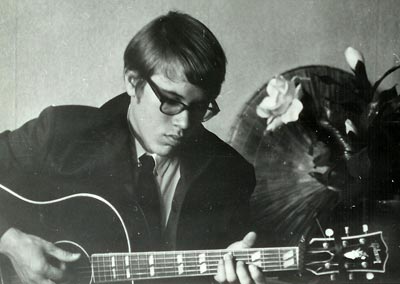
“Music and chemicals as a lifestyle”
In 1963 you moved to California to attend Stanford University. The music scene slowly started to explode. Did the local music scene influence you or inspire you to play music? You played with lots of the Bay Area folk circuit musicians.
The music scene had been expanding before I started at Stanford, and I was playing, and playing well, by the time I got there: I was playing bluegrass and old-timey songs and fingerpicking blues, and I knew more songs then than I do now … The San Francisco Bay Area Folk Scene featured a core of musicians that evolved—although “mutated” might be more appropriate—into the seminal San Francisco groups, giving rise to “The San Francisco Sound,” meaning music and chemicals as a lifestyle, and psychedelia, including Jorma Kaukonen and Paul Kantner—The Jefferson Airplane; Jerry Garcia and Pigpen—The Grateful Dead; David Freiberg—Quicksilver Messenger Service … just think: all this happened because you could get laid if you played guitar!
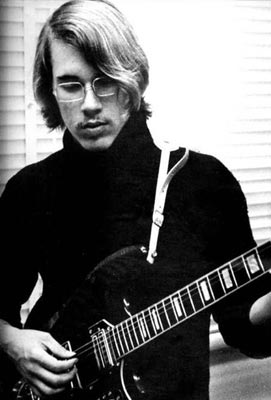
What was the first song you ever composed?
I wrote “that’s a good question” in 1967; I’d been experimenting with tunings and I’d fortuitously expanded on a drop-d tuning, where you tune the sixth string down a step, from an E to a D, by dropping the 1st and 2nd strings down a full step as well; this is the DADGAD tuning that is rightfully a popular and flexible tuning (I play in numerous tunings and am always looking for new ones) … “Question” has as much emotional significance and meaning for me now as it had then—it wears well and I’ve played it pretty much the same way for over fifty years … I recorded it on Black Kangaroo in 1972 and re-recorded it on my Crazy Quilt cd, from 2018, which you can still order from peterkaukonen.com …
I am reminded of an earlier song I’d written for my Stanford university era group “The Acid Grapefruit” called “The Gestation Period Of The Male Hagfish”. I was inspired by an incredibly loathsome creature, also called a slime eel, that eats its way into the body cavity of another creature and devours it from within; its defense mechanism is covering itself with a voluminous coating of viscous slime … it is truly a nightmarish organism, and I can only assume I’d had a vision of the future in which I foresaw the infestation and consumption of the body politic by the republican party …
One of the first recordings you appeared on is Blows Against The Empire by Jefferson Starship. How did that come about?
There was a sense of community and connection in San Francisco at that time that I doubt we’ll experience again–there is no jamming in the time of covid, is there? The mingling of musicians at shows, at offices, and at residences was musical, social, and chemical, lending itself to a cross-pollination and collaboration that was remarkable and magical … I’d sat in with The Airplane and Paul and Grace had seen and heard me and invited me to overdub on Blows; lots of people got the invite, wouldn’t you say? Also my brother was a founder of The Airplane and Hot Tuna, and my wife at the time was the assistant manager of the Airplane … coincidence? I wonder …
You also played on Sunfighter and Manhole.
Sorry, but I’m overdrawn at the memory bank … not much comes to mind other than that some of Grace’s compositions had a Spanish flavor to them, a style she recorded on The Jefferson Airplane’s 1989 release with Common Market Madrigal … she liked the way I played it on tour …
The most exciting part of this interview is your band Black Kangaroo. Can you elaborate the formation of Black Kangaroo? How were other members? Was this more of a solo project or a real band?
Bear with me now, while we stroll down memory lane, hand in hand: being at Stanford in the 60s wasn’t peace and love, not by a long shot: in my freshman year my football player roommate came to my defense when jocks wanted to break down our door and cut my hair; when the Vietnam War became an issue other jocks poured gasoline on my dormitory door and lit it because they didn’t like the poster I’d put up of a napalmed mother and child … Hey, I started to believe that Stanford—like so much of America—was a hostile and dangerous place … Or maybe I was just being paranoid; you tell me … anyway, after I’d left school I had a dream: I dreamt that I was walking across the center of the campus, surprised that the usually purposeful and bustling students were immobile, motionless, frozen in place, because … because there was a large black kangaroo, smoking a cigar, standing in the center of the plaza … suddenly a frat boy shouted “I’m late! I’m late!” and started sprinting towards a class when … he was intercepted by the black kangaroo who promptly and satisfactorily kicked the living shit out of him! … And I thought, “groooooovy! black kangaroos! The black kangaroo rectifies inequity, upholds freedom, and kicks the shit out of superfluous elitist assholes! Me for that! There’s my fuckin’ totem!” but hey, peace and love, you know black kangaroo was supposed to have been a band, but the personnel I started with didn’t survive the recording of the album, so different songs were recorded by a different cast of characters … when it came time to tour I had Jimmy Hillen on drums and Michael Lindner on bass …
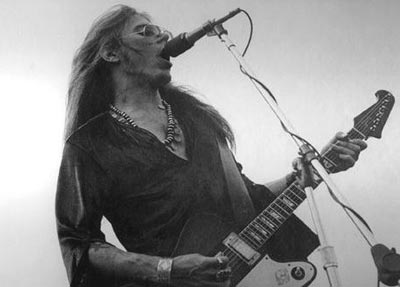
The cover artwork is really cool. You are standing in the middle of the desert.
The Black Kangaroo album photos were done by Jim Marshall, one of the all-time great photographers of music, musicians, and people and places; Thank you, Jim, for your contributions to my art and for an interesting friendship … as to the location of that shot, that wasn’t a desert; it was a small concrete reservoir for storing water; it was a lunar and surreal landscape with a post-apocalyptic aftertaste to it; it was filled in shortly after the photo shoot for the development of one of the very first mega-mansion gated communities, a tribute to the economic grandiosity of Marin County in general and Mill Valley in particular, and I liked it better when no one and nothing was there …
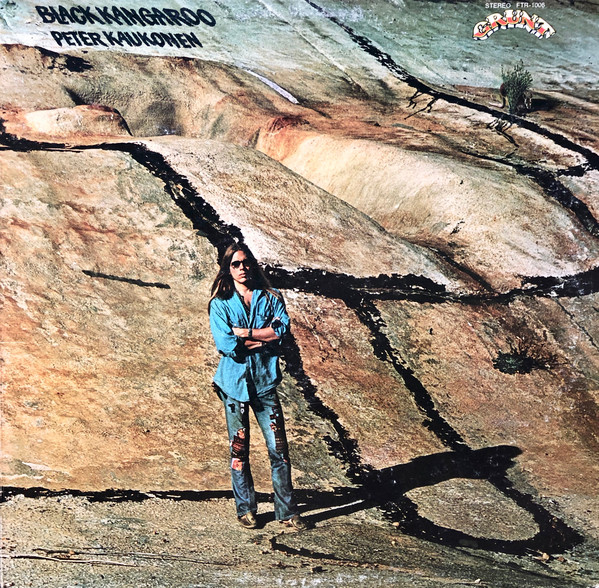
As for art inside the album: I’d wanted Greg Irons, a spectacular underground poster and comic artist, who later became a pioneering tattoo artist, to do the centerfold artwork in keeping with the poster he’d done for Grunt Records promo, but he was out of the country at the time, so the centerfold was done by Bunny Carter of Pacific Eye and Ear; it’s nice and it’s cute, but she didn’t have the nasty black snarkiness that Greg did.
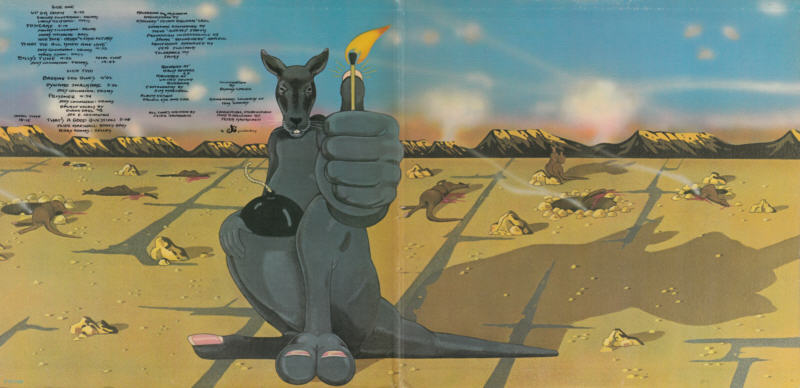
What influenced the band’s sound?
Any number of reviewers at the time drew parallels between Black Kangaroo and its similarities to Jimi Hendrix—some were gentler than others … I can’t say they were misguided, but in the tradition of critical simplicity they overlooked the diversity of my song list, with material influenced by Robert Johnson and delta blues (“Barking Dog Blues”) to Roger Kellaway and Bill Evans (that’s a good question) to a generic power trio format … two points I’d like to make here, the first being that the great pianist Bill Evans was and always will be a major influence on me–not in his extraordinary harmonic and melodic gifts but in his ability to imbue every note with emotional integrity, and the man could swing! … The second being, Hendrix and his production values on his first three albums conveyed, in a stereo recording, the sensory dislocation and blurring so often characteristic of a psychelic experience … oh, he was something, wasn’t he?
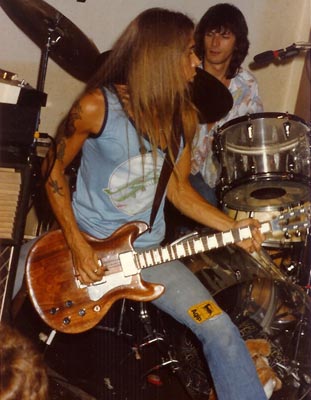
What’s the story behind your debut album? Where did you record it? What kind of equipment did you use and who was the producer? How many hours did you spend in the studio?
Well, the story is I wanted to be a rock and roll star, stay high, and get laid a lot … but seriously now: the commercial success of The Airplane gave them clout with RCA to bring their friends to market–think of The Beatles and Apple … I was part of that intake; there were others, none of them memorable, nor am I saying that Black Kangaroo was memorable: artists rarely make effective business people but then business people absolutely do not make effective politicians …
Black Kangaroo was recorded at Wally Heider’s in San Francisco; I believe it was an Ampex board to an Ampex 16 track with—gasp!—Dolby noise reduction! Mallory Earl engineered, sometimes assisted by Steve Jarvis; Mallory had been brought up from Los Angeles by Pat Ieraci, the RCA/Grunt engineer and liaison, to engineer Hot Tuna, and Black Kangaroo was Mallory’s trial by fire and chemical baptism … for the sessions I had a ‘62 Ampeg Reverberocket; a blond Fender Bassman serial #00179; a Fender super reverb; a stack of Hiwatt’s that had been modified to Jimi Page’s specifications; I had five Gibson SG’s, a Gibson 335 and 345, and three ‘60s twin pickup Firebirds; my 1946 Gibson Southern Jumbo and a Grammer acoustic guitar; a 1916 Gibson f-4 mandolin; a 1940s New York Epiphone archtop guitar, and an early ‘60 Danelectro longhorn bass … I was the nominal producer which wasted lots and lots of time—way too much time and way too much money went into it, not because I was “a perfectionist” but because I didn’t know what I was doing … I doubt that I’ve learned much in the ensuing fifty-plus years and I probably still don’t know what I’m doing …
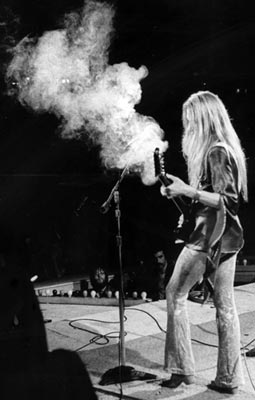
I’m using plague time to go through old files and tidy up, and I uncover an interview I did with Dennis Erokan of BAM (Bay Area Music magazine) from September of 1977, with a minutely detailed account of the origin of Kangaroo-how synchronous! Allow me to bore you further:
“Black Kangaroo? That comes from a dream I had at Stanford back in ’66 or ’67. This was a rough time; a time of social awareness, when people were discovering LSD, the war in Vietnam, and political activism. Stanford was not the perfect place for this kind of thinking. If I put a picture of a Vietnames mother and hcild on my door, the immediate reaction was that someone would probably spill a gallon of gasoline onto my door and drop a match in it … or the football players and frat boys would come by and kick down my door; I’d be cowering in a corner with a straight razor in my hand, saying ‘come get me, motherfucker ….’ This was my school career.”
“So, in my dream, there I was, long-haired, going back to Stanford. I was in a seminar with 500 people in a cavernous auditorium where some twit with leather patches on his sleeve was mumbling at a podium. Everybody was nodding and saying, “This must be the truth, Jack, cuz Dad is forking out ten grand a year and this is what’s happening.” The thing that knocked me out was that they all had their books upside down, right?”
“And I’m thinking: This is pure bullshit! I can’t read a book upside down and I can’t hear the guy, so I split. I walked toward the central placa where you can hustle chicks or meet your connection or whatever. Time was frozen; everything was suspended because we were in the middle of this plaza were all these black kangaroos smoking cigars, wearing tennis shoes. I couldn’t figure out why everybody was huddling in fear at the edge of the quad. No one was milling around in the center like they usually do.
“As I pondered this some guy in a Madras shirt and nice, tidy crewcut grabbed his books, said, “I’m late” and ran across the quad. Whereupon all the kangaroos converged upon him and kicked the living shit out of him. Obviously these kangaroos are out to avenge social injustice and rectify the wrongs of a maladjusted society.
“Thats for me! I do like their tennis shoes and they are smoking cigars, but I’m not going to cross that quad.
“The dream was in technicolor, cinerama, quadrophonic sound with a good mix. You could hear the meaty thunk of the rubber-soled shoes on the Madrasssed, crewcut turkey. Whack! Thump!”
“And it’s been Kangaroos every since!”
Would you share your insight on the albums’ tracks?
Some are better than others, and some are actually pretty good … oh, that was a serious question? Here’s what I recall: I loved Roger Kellaway’s Cello Quartet (A&M Records, 1971) and so “that’s a good question” featured the cellist Terry Adams, with Peter Marshall playing bowed bass; on my “Crazy Quilt” re-recording of “question” Jenny Douglass plays viola: Jenny’s playing, in concert and in the studio, is a revelation, and I think this is a lovely performance and a lovely recording … “Barking Dog Blues?” well, I wanted to play some blues, and so I did … I still like “Billy’s Tune,” musically and lyrically and sonically, plus it’s unusual in that it’s a “spoken word” piece … and yes, it shows how much I was impressed (which means “influenced”) by Hendrix’ “1983… (A Merman I Should Turn to Be)” from Electric Ladyland … I’m not saying I took it note for note but there are … ahem … similarities …. the other tunes? Well, they’re rock’n’roll and some of them are actually pretty good but … the “but” is that fifty years later I don’t resonate to or feel the need to revisit them, whereas “Question” is always part of my at-home or on stage repertoire, and yes, I have been known to play “Billy’s Tune” … my footnote here is that some of the songs I wrote and played when the world was young and green and young ladies weren’t wearing panties (now they’re wearing face masks) are still emotionally and musically relevant to me and what I’d like to play; most, however, aren’t: they don’t lend themselves well to solo acoustic guitar and I can’t do splits any more, so … I doubt very much that a Black Kangaroo reunion tour will be coming to a venue near you (after the plague, of course) to rock and roll out their greatest hits …
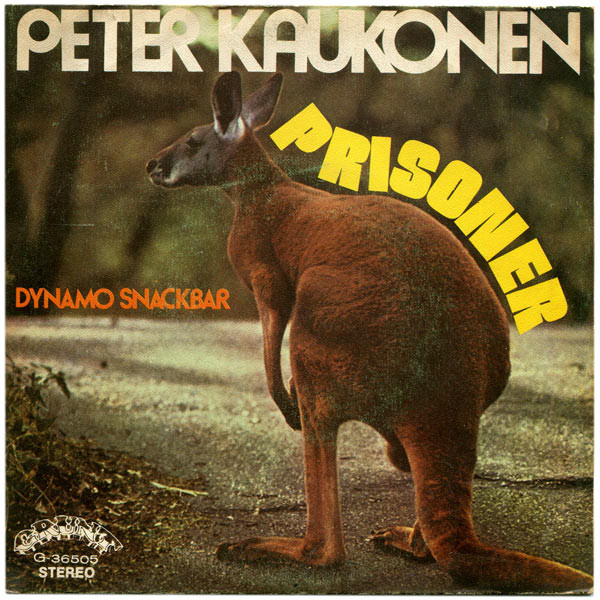
Were you inspired by psychoactive substances like LSD at the time of writing the album?
This was not an acid album and at the risk of contravening the presumed thrust of your publication I’d say that entheogens can certainly stimulate visions that can be manifested artistically but that by and large the notion of “psychedelic” music is an excuse for self-indulgence, onanism, an absence of taste or discretion, allowing for the inability to tune a guitar let alone bend a note to pitch; Hendrix was a notable exception … I’d also suggest that there was a great chemical difference between recording in the mid- to late 60s and recordings done in the early 70s, meaning that cocaine was becoming more of an artistic stimulus than LSD, and I dare say that the emergence of cocaine contributed to the time and money overruns in the production of Black Kangaroo …
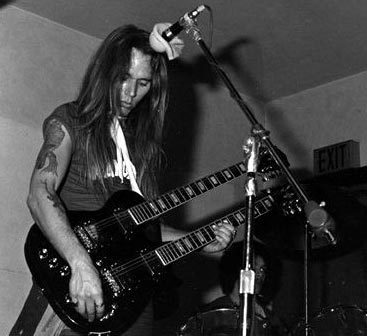
How pleased was the band with the sound of the album? What, if anything, would you like to have been different from the finished product?
Who cares what the band thinks? ha ha … no …. I’m kidding, of course but … I’ve just played the Black Kangaroo vinyl for one of my boys, (he said, hey dad, you were really cool, weren’t you?) and damn! It sounds great! It really sounds good, and it’s a compelling sonic landscape, spacious and clear and articulate with a wonderfully warm and full bottom end … great sound, and some great playing on everyone’s part … years ago I reclaimed all my original tapes from RCA—RCA was astonishingly obliging and forthcoming with them—and baked them out for transfer to compact disc ….. the cd’s that were reissued by wounded bird were remastered from the original mix tapes, a painstaking process that paid off, because the sound of those cd’s is wonderfully close to the original tapes and the vinyl pressing … So I’d say I was pleased then and still am … as for what I’d to like to have been different? I’d like to have had twelve commercial cuts on the record so I could’ve made a pisspot full of money and snorted my brains out before going out in flames while driving my custom lamborghustini over a cliff! … no; just kidding about crashing a car; I’d never want to harm a fine motorcar …
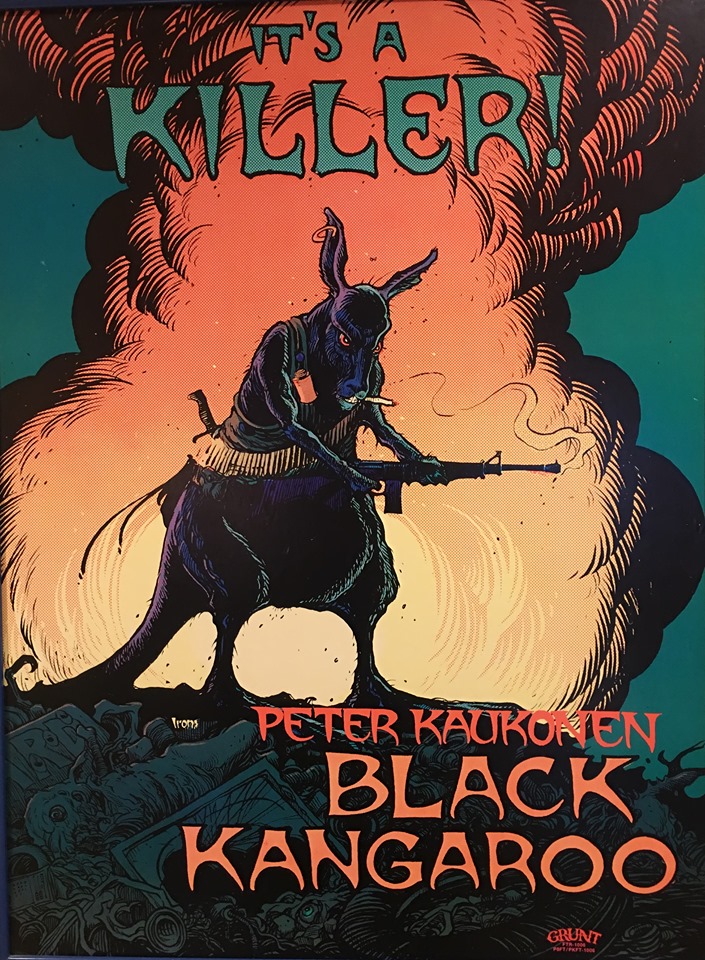
“Black Kangaroo shows would shift from pandemonious thunder to acoustic delicacy and back again ….”
Did the band tour to support the LP? Looking back, what was the highlight of your time in the band? Which songs are you most proud of? Where and when was your most memorable gig?
There was a band that did tour but was hindered by the inefficiency of Grunt Records’ promo people and lack of product in interested markets … what momentum I might’ve had petered out—ha ha—when people couldn’t buy records … Black Kangaroo played Max’s Kansas City in New York with Steely Dan; that was pretty good … these tours were characterized by delirious excess in oh so many ways, from extravagant volumes to clearly inappropriate and injudicious behaviours coinciding with easy access to quaaludes and coke but … you’ve all read the books and probably done it yourself so … after so many years “proud” isn’t a word that comes to mind in that I don’t dwell on things that I’ve done, especially after fifty years–I’d rather be creating new material but … as I said, I still play “That’s A Good Question” and re-orchestrated it for “Crazy Quilt;” I think it’s a lovely piece of music in any incarnation … but again, I wanted to showcase my instrumental abilities, so the songs on Black Kangaroo are quite diverse, and Black Kangaroo shows would shift from pandemonious thunder to acoustic delicacy and back again ….
Is there any unreleased material?
No, and I discarded all the tapes from those recording sessions years ago … that music? It’s all long gone, we will never hear it again … as if there was anyone that wanted to …
How about your band Petrus. There’s only one recording left that appeared on compilation by Drag City (I Can’t Get It Out Of My Turn To Stone Head). Your bandmate Ruthann Friedman also released her solo album in 1969 (Constant Companion) that you appeared on. Who were other members of Petrus and when exactly was this? Is there anything unreleased?
Petrus was in ‘66? A&M Eecords? I believe that Ruthann accessed and released some of that material later but … that was a l-o-o-o-o-o-o-o-n-g time ago …
Did you play in any other bands in the 60s or 70s?
There were numerous incarnations of Kangaroo in the 70s—one of them included Andy Kulberg and Roy Blumenfeld from The Blues Project, along with David Lewark who’d played guitar for Eddy Money … but … they played local venues, watering holes, and counter-cultural dives in the San Francisco bay area …
You also appeared on Jenny Sorrenti’s Suspiro album and you also played with legendary Link Wray on Be What You Want To? How did that come about?
Jaime Howell, the nominal producer of Black Kangaroo, had an Italian friend who knew the Italian singer Bobby Solo who owned a recording studio who was looking for an american engineer who could bring a hip and groovy San Francisco sound to Italy, and with this roundabout connection I was offered a job as engineer at the Chantalain studios in Rome … I’d never really engineered before, but it’s just twisting knobs, right? I went thinking I’d record one album and ended up staying two years … it continued my exposure to different musics as well as a work ethic and musical skill set that was worlds apart from those of my California compatriots … I recorded Banco del Mutuo Soccorso, a prog-rock group of astonishing depth; Canzoniere del Lazio, who were blending traditional and regional styles with classical and jazz influences and, as you note, Jenni Sorrenti …. their music turned my head around and I ripped them off … I mean, I was “greatly inspired” by what they were doing, and I still am … it was a great time in a great place, the music and musicians were astonishing–as was the food–and I am still in touch with some of them … as for Link Wray, I really don’t recall … Terry Allen’s another story …
How about collaboration with John Green (Winds Of California), Michael William Gilbert (I Can See From Here), and Terry Allen (Juarez)?
Folks, if you’re not familiar with Rerry Allen’s Juarez, you are truly missing out on a fundamental piece of work … Terry is one of the great artists of all time, and I mean “artist” in a gazillion senses of the word; go check him out and do it now! Stop reading my nonsense and go look and listen to what Terry’s done; you won’t regret a moment ….
Michael Gilbert is also a must-visit: he is an electronic music composer whose compositions are musical, whimsical, and compellingly rhythmic … his tonal palette is astonishing, his compositions are lacy, insistent, and absorbing, his technical skills are breathtaking, and the depth of his heart profound … I’d say that his work could fall under the aegis of psychedelia far more readily than what I’ve done and certainly what I’m doing now, but he never loses track of where he’s going, and I do that whether or not I’ve been psychedelicized … Klemen, Michael’s music is exhilarating and he’s wonderful to talk with; I suggest you interview him; you won’t regret it … as for John Green, I’m now overdrawn at the memory bank …
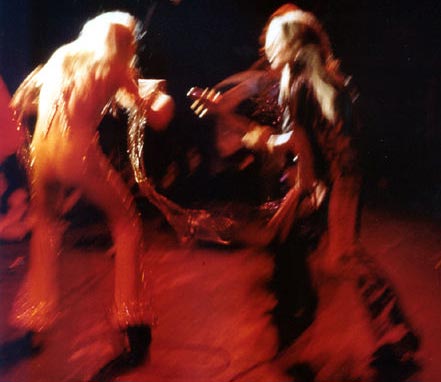
You also played, toured, and recorded with Johnny Winter and Hot Tuna. How was that?
Johnny was the real deal, a great player and a great singer steeped in the grand traditions of funk, soul, and the blues; playing with him was an honor and a privilege and I sometimes feel that the recordings he made never captured the depth he had playing live … Hot Tuna certainly had many a moment but the nucleus of Jack and Jorma didn’t leave much room for another lead instrumentalist …
“When asked ‘what kind of music do you play’ I reply ‘unpopular …'”
Would you like to comment on your latest two albums Going Home…, Traveller and your latest Crazy Quilt?
When asked “what kind of music do you play” I reply “unpopular ….” like, why don’t I have more gold records, right? Back in the 60s and 70s I could write songs about sex, drugs, and rock’n’roll and they would all be age and generationally appropriate … now? These days all my drugs are by prescription and not one is remotely recreational, sex is still compelling but hardly worth writing a song about (Kangaroo used to play a song called “Unsatisfactory Sex), and with my hearing loss? I’m rock and roll volume shy and now primarily play acoustic guitars … I am not a prolific writer, but Going Home… was something else: I had something I wanted to say, and I had the time and the tools with which to say it … I wrote twenty-eight songs of which fourteen made it to disc, the musical timeline of my mother’s time of dying as well as chronicles from her life … you see? Unpopular, for sure but … it’s a remarkable piece of work … when I listen to it now–and I do–I am astonished: did I write this music? These lyrics? Compose, arrange, and play the orchestral parts? Play piano like that? I can’t write music like this now, perhaps because I keep looking for stories to tell and the stories that come to mind are too without hope or redemption to be considered … perhaps I should stop reading “the news?” and worrying about the future?
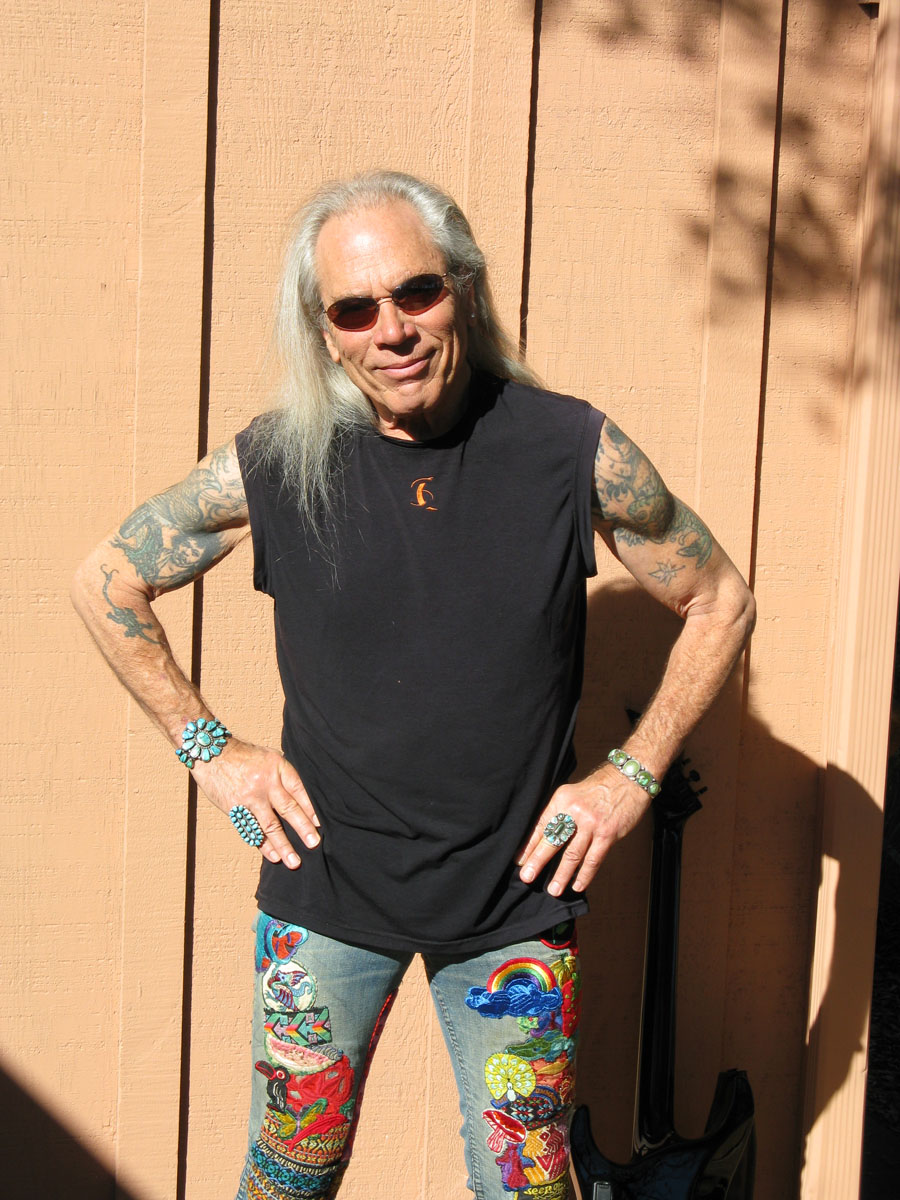
Crazy quilt is yet another eclectic assemblage, a blend of works culled from my archives combined with new recordings … it’s a tasting menu that tantalizes the palate with political broadsides that are never outdated even though they’ve faded into the fog of the united states of amnesia; electronic odes to the spirits of a murdered child taking possession of my studio (there’s a story for you); an instrumental inspired by drift diving off of cozumel; songs of aging and existential despair (more fucking unpopular music, right?); an instrumental written during my time in Italy (which first appeared on Traveller); a new version of “That’s A Good Question;” yes, Crazy Quilt is a collection of timeless pieces that are seasoned with maturity and panache, leavened with hilarity and wisdom, music to chronicle a descent into senescence and decrepitude and … no! NO! It rocks! It’s got something for everyone! Everyone with taste, discretion, and disposable income, that is! And if you qualify, especially with the disposable income, your copy is waiting for you, right now!
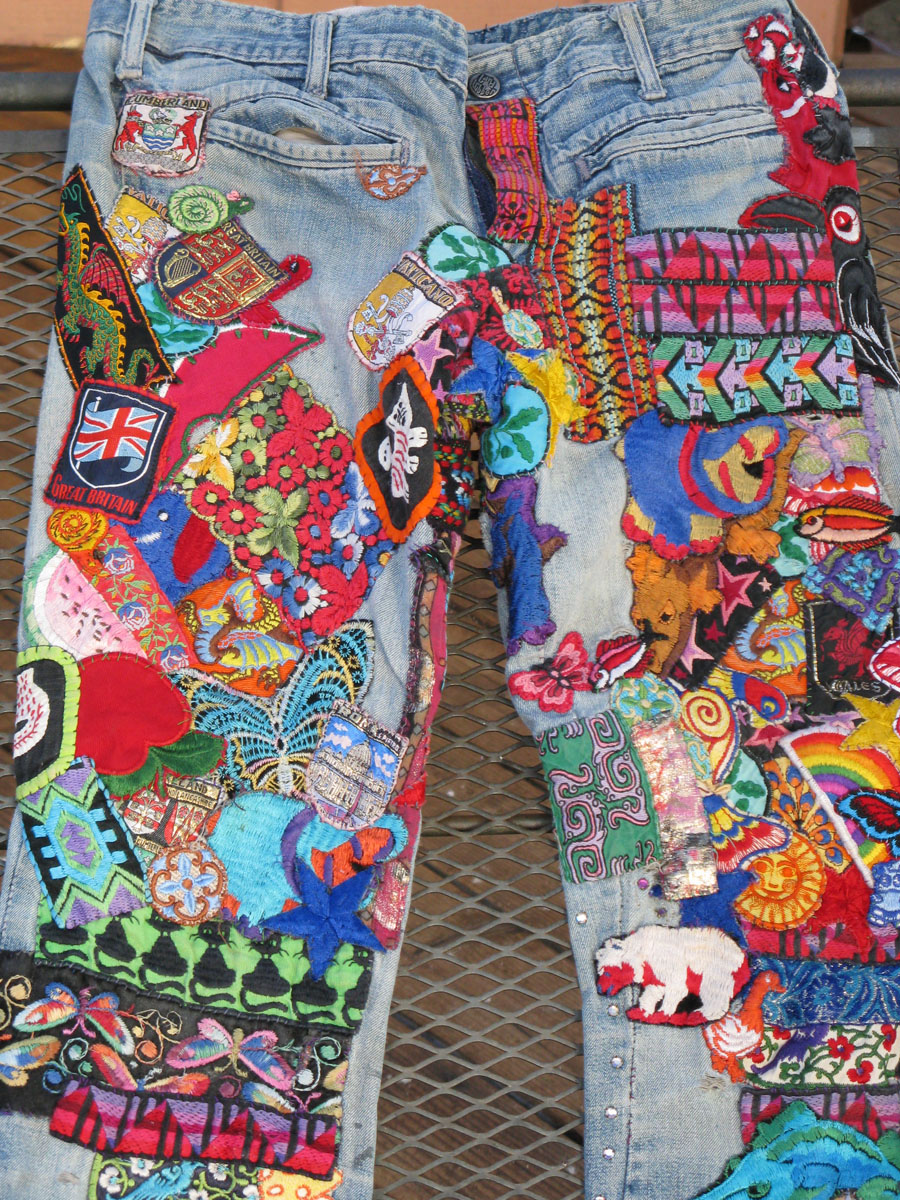
Traveller was done in the mid-80s, an album of acoustic music with stellar performances by Norton Buffalo; Darryl Anger; Lee Parvin and Nancy Hall; Norman Salant and, of course, yours truly … it’s quite charming in a coltish adolescent fashion, the bonus track is from a live performance of my “acoustech™” music, where I’d run an acoustic guitar run through a volume pedal into four digital delays; two harmonizers; a flanger and two stereo choruses; a compressor, a graphic eq, and an analog delay; the multiple wet and dry signals were fed through an eight channel mixer building up complex stereo imaging with studio quality reverb … folks, this was w-a-a-a-a-a-y beyond using an echoplex; I’d wanted to, with an acoustic guitar, create the sonic textures, depth, and dimension that Hendrix got on his recordings, and I dare say I did but … did I get fame? Did I get fortune? Did I get recognition and acclaim? No; what I got was the crabs on one tour and chronic back pains from carrying the heavy racks of signal processing gear; thank god for gin and vodka, that’s what I got to say! And long live rock’n’roll!
What currently occupies your life?
Two months ago there would have been a different set of answers, wouldn’t you say? These days I imagine I’m doing what you’re doing, or should be doing: sheltering in place; washing my hands til they bleed; taking the dog for walks; reading; playing guitar; hoping that the muse will pay me a visit soon and galvanize me into a flurry of creativity … folks, when we come out of this plague we’ll emerge into a new world that’s been scourged by pestilence and stupidity, and part of my current anxieties come from the difficulty I have imagining how badly we’re going to be fucked by the idiots that cling to power and that don’t seem to succumb to pestilence … I could be writing songs about that, but god, think how unpopular they’d be!
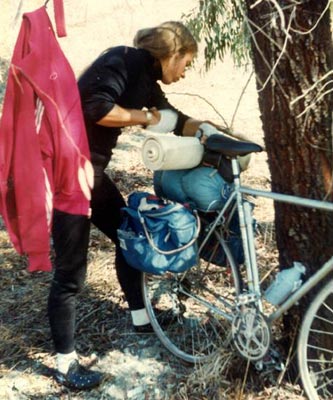
I noticed that you like road cycling?
I’ve loved bicycles since I got my first English 3 speed when I was, what? Seven? I’ve been riding on and off road for a long time; before we moved to Oregon close to two years ago I was riding two hundred and more miles a week, and every summer I’d go out for a week of remote trail riding in Utah, and boy, did I have legs! … now? Riding in the Portland area is nothing like riding in Marin County, where I could walk out my door and be gone for hours of road or trail riding … riding is a spiritual necessity; I miss that kind of connection to nature and don’t do well riding in traffic, through neighborhoods, which characterizes riding here … but I’m fortunate that I can still get out and ride in this time of plague; cycling helps me stop thinking, which is always a good thing for me … bicycles and guitars, they’re beautiful things that’ll bring beauty into your world, and we all need all the beauty we can get; I hope you all are able to find as much of it as you can …
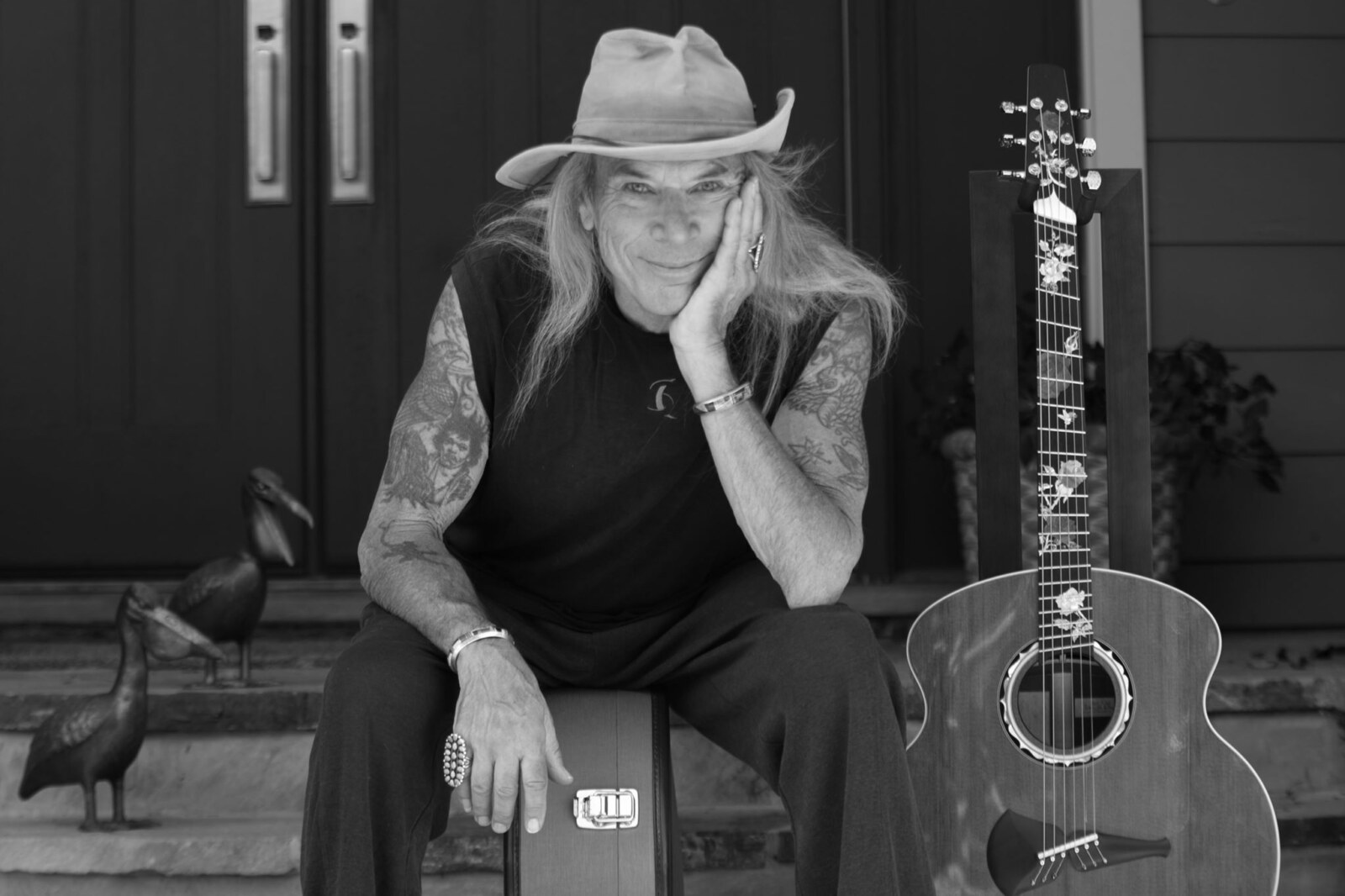
Thank you for taking your time. Last word is yours.
First off, thank you so much for your interest and invitation; your research was, well, quite thorough, and jogged many a memory and opened many a door into compelling corridors long unvisited … I feel almost like apologizing for going on and on and mumbling over minutiae and being boring instead of going boldface and pulling out the obligatory war stories of sexual peccadillos and drug overdoses (none of them mine, I hasten to add) but I’m sure you’ve all read those stories before so … the opportunity to reminisce and recall is timely: here we are in the time of plague when I’m not performing or touring (who is?) nor am I recording … answering your questions has allowed me to reflect on stories and histories and, more to the point, share some of my life with my fifteen-year-old twin boys; thank you for opening that window … Were I not to do it now I’d wonder if i ever would; Daniel, my younger-by-thirty-minutes-son, looked at the picture of me on the Black Kangaroo record sleeve, takin’ a drag on a cigarette, long hair, lotsa attitude, and rayban pilot’s glasses and said: “gee! you were cool, weren’t you?” I certainly thought so at the time; now I’m not so sure … but … I hope you’ve enjoyed my my commentary … I’d like to add that listening to music that I’ve done probably won’t induce synæsthesia like a robust psychedelic would, but I’ll guarantee you it’ll take you on a trip … maybe that’s why we play and listen to music; music enhances life and living … be well, stay safe, and wash your hands …
with best regards to all,
anne t. septik aka peter k.
– Klemen Breznikar
Peter Kaukonen Official Website

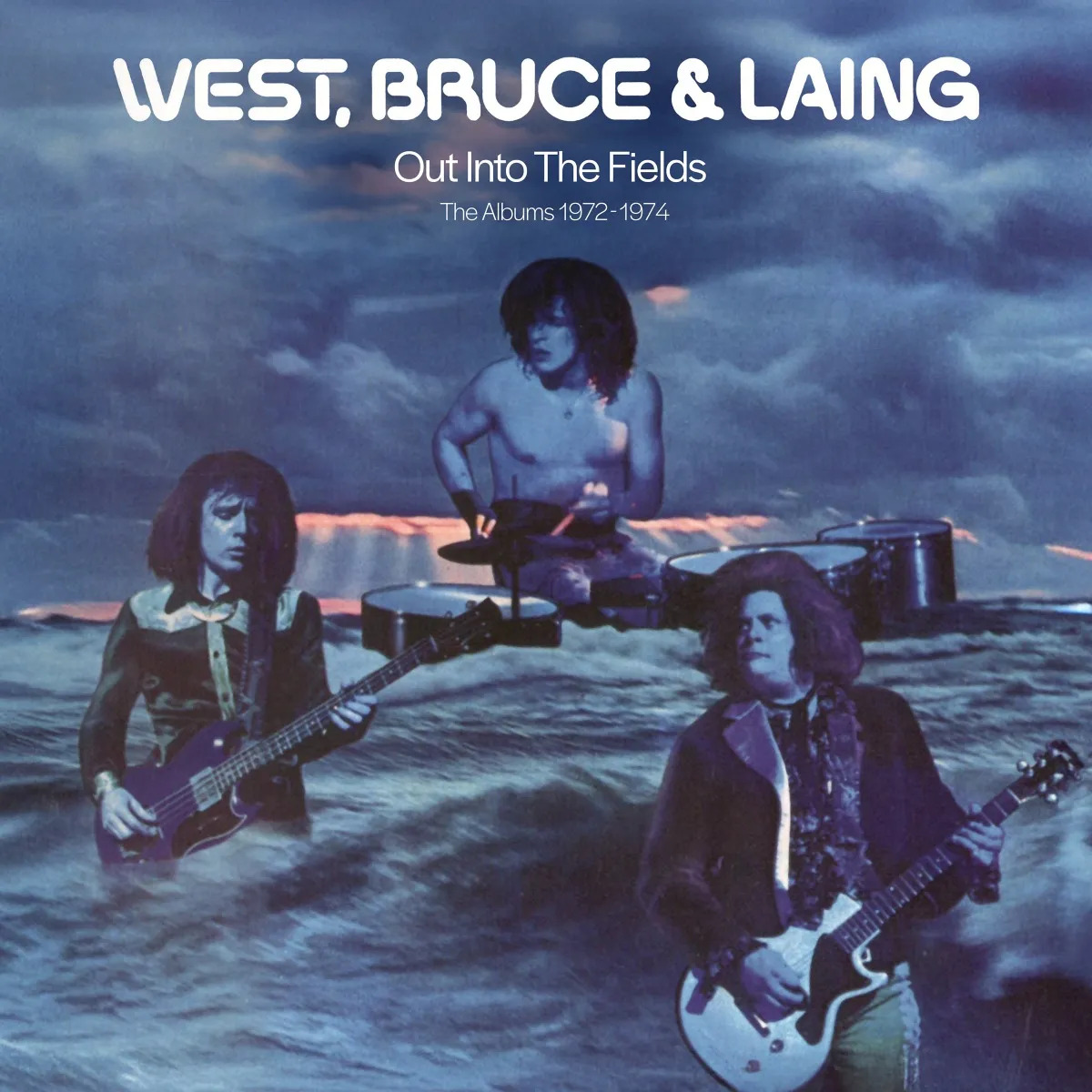
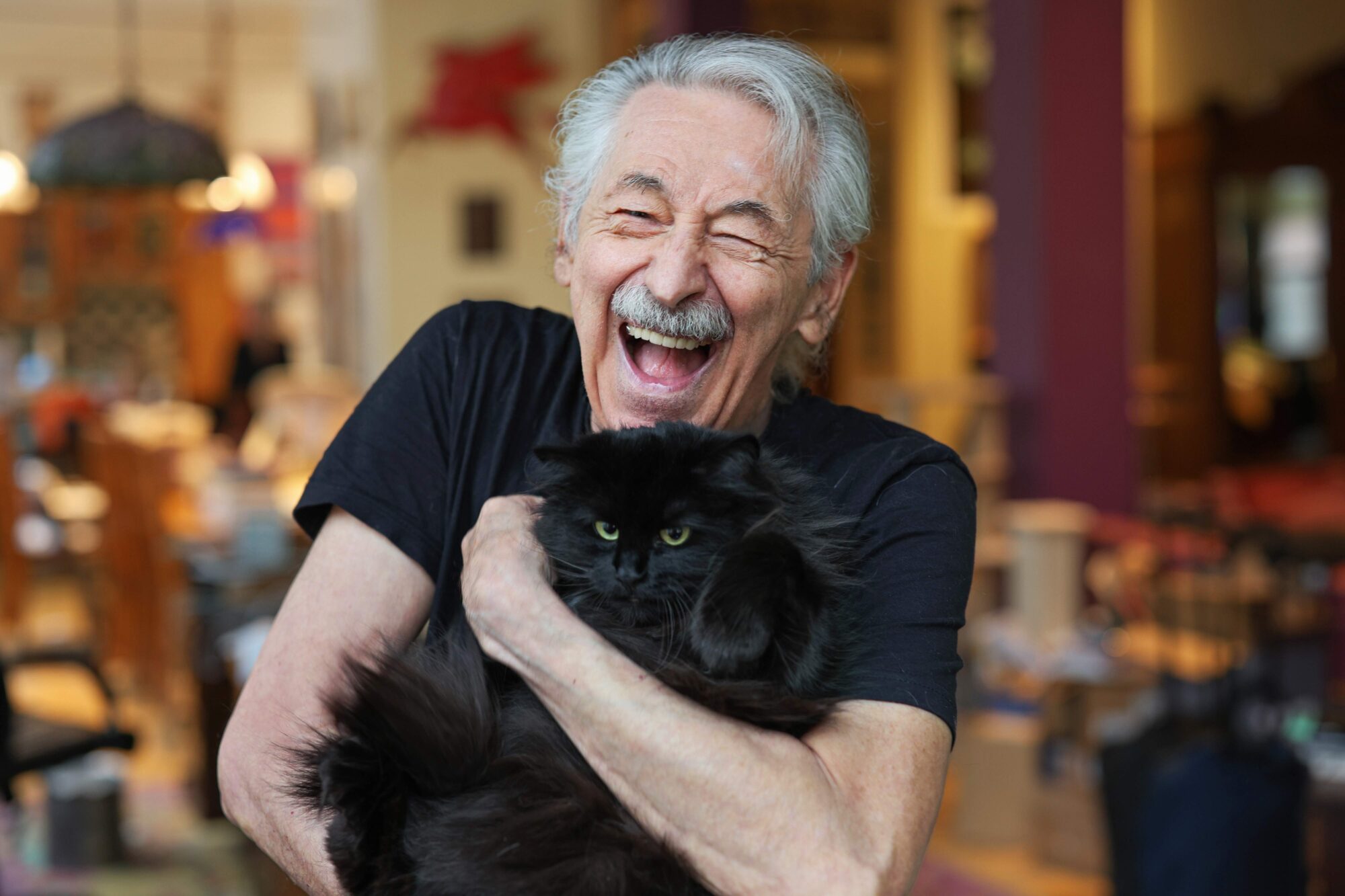
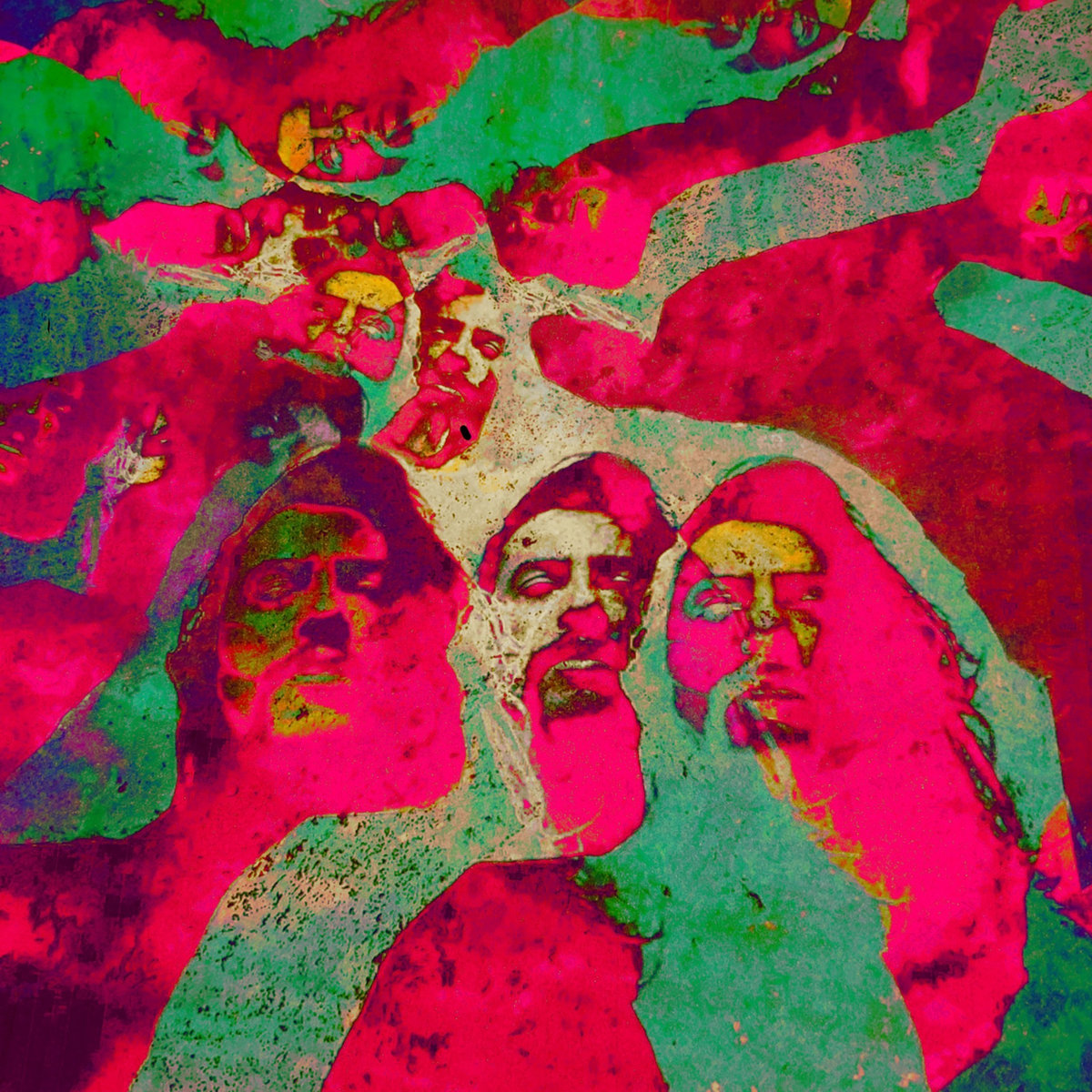
Remember me ? I tattooed your leg with a Greg Irons design after he died. Signed it ’84…
I just stumbled across this interview and had to add. Peter and I have been friends since the mid 70’s when we were neighbors in Mill Valley. Can’t begin to explain the connection as musicians but it has been magical. As guitarist’s, lot’s of listening, give-and-take, embellishing a good riff from each other. It was really kind of amazing as we are both extremely type A lead guitarist types. According to the handbook, we should be at each other’s throats! In closing, Peter has produced some absolutely wonderful, thoughtful, inspiring songs that I highly recommend you pursue. You will be happy you did! Thanks for your attention!
Your Kauffman acoustic looks amazing, heard roomer that Steve has built you a new one with a special crest on the headstock.
Interesting interview with Peter. Wish he would have gone into some detail about recording with Kantner/Slick in the early 70s (Blows Against the Empire, especially … but also Sunfighter and Manhole). I believe he went on tour with Jefferson Starship in ’73, (playing bass) and I saw him play bass on a Jefferson Starship NW tour in 1994 (Richland, Portland & Eugene), which included Signe Anderson joining them in Portland and Eugene! And then, also, he was on the JA reunion tour.
Nice interview, Peter. Our correspondence gets more sparse as the years go by….but I remember our times fondly. Hugs to you, Robin and the boys. Oh…and Happy Birthday!!!
Was giving the ‘Black Kangaroo’ album a spin this morning and wondered what Dr Pete was up to these days when I found this interview. He was kind enough to trade a few e-mails with me around 2008 after I was recovering from a couple of heart attacks which meant a lot. I’m glad to see his boxing kangaroo spirit is fully intact and operative. I recall I sent him a recording of the Welsh poet Dylan Thomas reading ‘Do Not Go Gentle Into That Good Night’ and hope sincerely that Dr Pete will long ‘rage, rage against the dying of the light’. Best wishes to him and his family and thanks Klemen for the great interview.